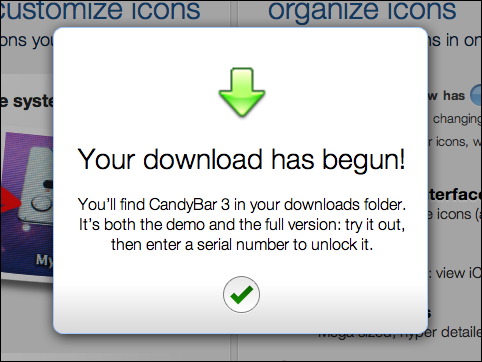Installing Applications on the Mac: Still Broken
More than a year ago, I wrote Installing Applications on the Mac is Broken, wherein I lamented the fact that installing applications on the Mac is confusing to many users, especially if it involves dealing with disk images. The concept of a disk image is hard enough to understand; there's really no reason why we should confuse people by using them for things other than creating images of actual disks.
Today, Keith Lang tweeted this about his girlfriend who just got her first Mac:
My girlfriend didn't understand what to do after downloading an app
Apparently, installing apps on Macs is still confusing. Without having done any formal usability tests, it's hard to say what Mac developers should do. I believe Panic and Pico/Sofa got it right, though.
- Distribute a ZIP containing only the app
- After the user clicks on the download link, show a simple explanation
Here's how the explanation looks on Panic's site:

And here's how it looks on Pico and Sofa's site:

This explanation assumes that the ZIP file will be extracted automatically. Since casual users are most likely to be confused by the whole process, targeting the explanation at people who use Safari with its default settings is acceptable. People who changed this setting or switched to a different browser can probably figure out how to unzip the application.
Going with a ZIP file instead of a disk image avoids the issues created by people dragging an application from its mounted disk image directly to their Dock. A ZIP file also avoids the confusion caused by applications disappearing after a restart because their disk images aren't mounted anymore.
Even if inexperienced users never move the downloaded application out of their "Downloads" folder, it remains accessible and fully functional1. Downloading essentially equals installing.
-
Turns out this is not entirely true. Dan Frakes points out that the Applications folder has a few special properties. For example, application-provided Services are only active if the application is stored in "Applications" in either System, Network, Local, or User. ↩︎
If you require a short url to link to this article, please use http://ignco.de/132




